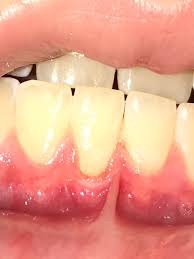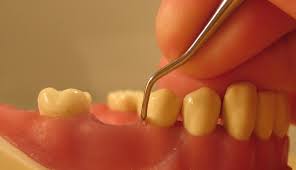Gum Disease Periodontal Treatment An Incisive Review
We observe March 20th as World Oral Health Day. As a part of it let us have a glance at oral health. To maintain a good oral health it is very important to know and avoid the causes of dental emergencies and how to maintain a good dental health. ‘Live Mouth Smart’ the theme of 2017, empowers people to take care of their oral health. Oral health is mainly related to the health of the mouth. As we all know the beautiful teeth helps us to maintain the confidence to bear a smile which adds beauty to us. Today let us cast a brief look at gum disease periodontal treatment.
What Is Periodontitis Disease Or Gum Disease?
Periodontitis disease or gum disease is mainly caused due to the infection of the gums surrounding the teeth. This  disease is one of the causes of the tooth loss. Some of the studies have revealed that there is a link between periodontitis disease, heart disease, and stroke. Do you know that gingivitis progresses into periodontitis – the advanced form of gum disease which is irreversible? Each one of us is at the risk for gum disease, but it usually occurs after the age of 30.
disease is one of the causes of the tooth loss. Some of the studies have revealed that there is a link between periodontitis disease, heart disease, and stroke. Do you know that gingivitis progresses into periodontitis – the advanced form of gum disease which is irreversible? Each one of us is at the risk for gum disease, but it usually occurs after the age of 30.
Gingivitis is a reversible form of gum disease that affects the gingival tissue that surrounds your teeth. If left untreated, the bacteria that invade below the gum line also known as periodontal pocket causes gingivitis that eventually leads to periodontitis.
Forms of Periodontitis Disease or Gum Disease
- Aggressive Periodontitis affects healthy people, which leads to bone loss and destruction to the attached gingiva.
- Chronic Periodontitis is the most common form of periodontitis, it mainly affects adults. Bone loss, inflammation of the gingiva progresses slowly.
- Disease associated with Periodontitis include heart disease, diabetes, forms of arthritis have a correlation with periodontitis.
- Necrotizing periodontal disease: It is related to the death of gum tissue and bones that surround the teeth. Persons who are affected with HIV/AIDS, malnutrition display this form of periodontitis.
Factors Leading to Periodontitis Disease or Gum Disease
- Excess use of tobacco.
- Clenching or grinding your teeth.
- Certain medications can lead to periodontitis.
- Genetical susceptibility.
- Brushing and flossing in an improper and infrequent manner.
- Certain medications that cause gingival enlargement.
- Pregnancy and oral contraceptives
- Teeth which are crooked or overlap each other.
- Diabetes also leads to gingivitis.
- Plaques around the wisdom teeth, above and below orthodontic bands.
- The practice of poor dental hygiene.
- Chronic stress and poor diet.
Symptoms of Periodontitis Disease or gum disease
- Gums which bleed easily because of the effect of the nicotine in blood vessels.

- Bad breath and loosened teeth.
- Pain while chewing.
- Puss appearing between your teeth and gums
- New spaces developing in between your teeth.
- When you bite there seems to be a change in the way your teeth fit in jaws.
- A tender feeling of the gums when touched.
- Expanded or distended and discoloured gums
- Teeth look longer than normal when the gums got pull away from your teeth.
Treatments
 Treatment is performed by the periodontist. Gum disease periodontal treatment procedure includes cleaning the pockets around teeth.
Treatment is performed by the periodontist. Gum disease periodontal treatment procedure includes cleaning the pockets around teeth.
You can adopt a daily routine of good oral care and treatments.
Nonsurgical Treatments
Here is a list of Nonsurgical gum disease periodontal treatment’s.
Implementing Scaling: It removes bacteria from the tooth surfaces and from the gums. It is performed using a laser or an ultrasonic device.
Adoption of Root planning: By doing this it smoothes the root surfaces and removes bacterial byproducts that
enhances the inflammation and delay healing.
Usage of Antibiotics: Using antibiotics can control bacterial infection. It includes antibiotic mouth rinses or insertion of gels containing antibiotics in the space between teeth and gums.
Surgical Treatments
Flap Surgery: In this treatment, the surgeon makes tiny incisions in your gum so that a section of gum tissue can be lifted back, for effective scaling and root planing. This disease often leads to bone loss, the bones may be built back before the tissue is back in place.
Soft tissue grafts: You can see the gum line recedes when you lose gum tissue. There is a need to reinforce the soft damaged tissue, it is usually done after removing a small amount of tissue from the palate. By undergoing this treatment the gum recession can be reduced and also give your teeth a pleasing appearance.
Bone Grafting: The graft is composed of small fragments of your own bone, sometimes the bone may be donated or synthetic. It leads to the prevention of tooth loss by holding your tooth in place.
Guide tissue regeneration: In the adoption of this method, the dentist places a special of fabric between bone and tooth. This material prevents unwanted tissue from entering the area, allowing the bone to grow back.
Tissue-stimulating proteins: By adopting a special gel to the tooth root. This gel contains the same proteins which help in developing tooth enamel and stimulates the growth of healthy bone and tissue.
Book an appointment with a Dentist!
It is the best advice to make an appointment with the dentist for a checkup since it requires professional cleaning to remove plaque, along with home maintenance. Only a dentist is able to confirm the extent of your gum disease and plan proper treatment accordingly. A regular checkup will help keep gum diseases under control. Feel free and make sure to speak with your dentist at All Smiles Dental Spa about the issue in the next appointment.
Leave a reply
Leave a reply